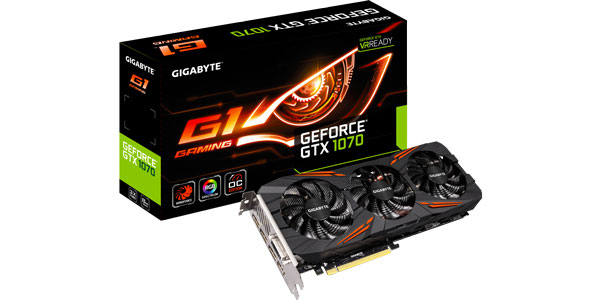
Gigabyte is a widely recognized name in PC Gaming and Hardware. Over the years, the brand achieved its status as one of the most reliable and quality manufacturers, and continues to maintain that standard moving forward with new products. I have previously owned a Gigabyte Radeon HD6850 and the product earned my respect after a consistent 4-year use. The card has never proven to be faulty and provided great stability for my system at the time, paired with a motherboard by Gigabyte as well. But all nice things come to an end some time, and the 1GB old card was simply outdated by the time it hit 2014 and 2 years further.
Moving forward with the new PC built from the ground up, it was important to get the parts that will provide the best stability and performance. At the time of building, back in August 2016, the new Pascal cards by Nvidia have been released to world markets and quickly gained wide attention. At the time, I followed a lot of media news on the new cards and observed how the GTX 1080, 1070, 1060 and later on the 1050 were released to positive feedback. Thus I knew that to achieve best performance and future-proofing, it would take one of these Pascal cards to do the job well. Buying soon after release wasn’t the smartest decision, but prices haven’t changed around much since then.
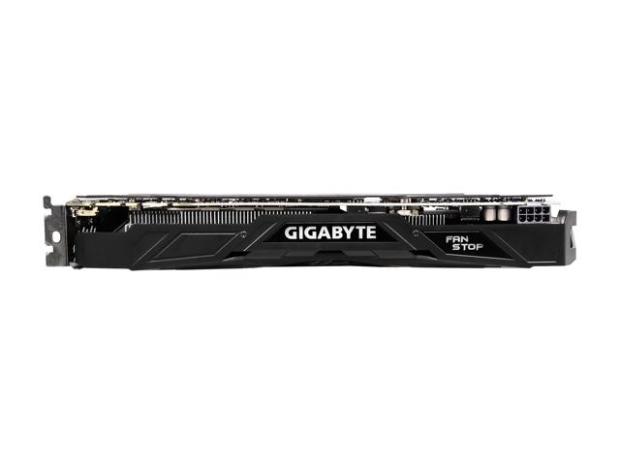
Which card to pick up then? The GTX 1070 was crowned by many tech and review sites to be the best price-to-performance ratio, even if the 1060 is more of a budget options. The GTX 1080 was way out of my price range, especially considering that Canadian prices we’re $200+ on top of the US market (so that factored, a GTX 1080 was $1000 and upwards). The GTX 1070 was still quite expensive, however it not only looked like the best value proposition for the performance you get, but also proved to be one over the time I’ve had the new build. The GeForce GTX 1070 is the best value for your money card and packs in a whopping 8GB of video memory to make the product last well for years, in addition to the amount of streaming power it already has. As far as manufacturers went, a lot of choices were appealing, and for the time being I seriously considered getting an Asus Strix. However, after some more research, the Gigabyte G1 Gaming GTX 1070 caught my eye.
In my experience, Gigabyte offers some of the best performance components on the market, and doesn’t skip out on stability either. So after doing some further research, the G1 Gaming GTX 1070 became my GPU choice. Aside from reliability that I’ve come to experience from the brand, Gigabyte additionally offers some of the highest clock speeds on their graphics cards, and the OC clock on the G1 1070 is faster than any of the Asus Strix or MSI models. This makes this version of GTX 1070 even faster with headroom for higher clock speeds to further increase performance. On top of that, the GPU looks very stylish and offers solid 3 Windforce fans. Gigabyte may lose to Asus Strix or MSI Twin Frozr in terms of cooling performance, but it is up there with the crowd. With all that said, its time to actually discuss the facts on the GTX 1070 G1 Gaming by Gigabyte.
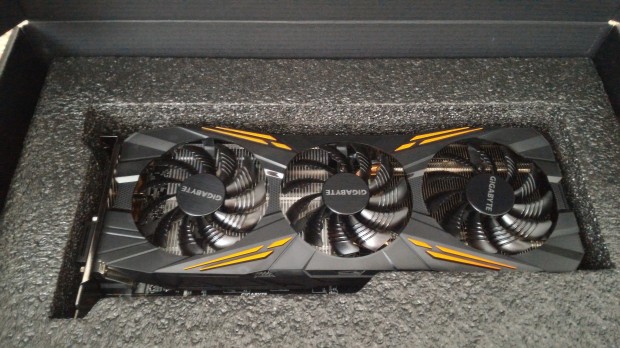
Out of the box, this graphics card looks quite stylish. Its packaged well so it does take time to get to the sweet spot, but product protection is way more important if you’re spending $600-700 on a GPU. The G1 Gaming shares its design language with the less powerful GTX 1070 Windforce and the GTX 1070 mini-ATX, but this model is the one of largest out of Gigabyte’s 1070 line-up, only outclassed by the heavy reinforced Gigabyte GTX 1070 Extreme. The GPU comes in more compact than the competing Asus Strix, which gives the G1 Gaming advantage in both speeds and accessibility. Still, 3 cooling fans on a card mean it’s quite massive and heavy, which requires care for installation. But with that said, the Gigabyte’s GTX 1070 flagship doesn’t weight an awful lot to damage the motherboard or the PCI-e slot it rests in. I found no reason to provide any additional support for the graphics card inside my case and over the time it’s been there so far, there is no indication that the weight of the 1070 can damage the PCI-e connection port. Gigabyte has stuck to their preferred design, with an all-around black PCB with some orange accents. The accents form an “X” over the middle fan and although the overall picture can look simplistic, the design is still very attractive. Not everyone will agree on that and it’s a design that doesn’t appeal to everyone, but Gigabyte does a great job of making the card look simplistic, but good.
The build of the G1 1070 is standard when it comes to graphics cards, with a reinforced frame, a visible heatsink and the triple cooling fans. The GPU is reinforced from the bottom by a metal plate to provide excellent protection. You get what you pay for with this one and the quality ends up being very good. No components are left on the outside and the Pascal chip rests under the heatsink with additional protection from the bottom. Under the fans, the G1 1070 exposes its heatsink that runs the length of the entire card. The heatsink is in turn covered by a plastic shell that forms most of the visual design, and 3 Windforce fans are integrated into it. Gigabyte’s fan technology may not be the most efficient, but smaller fan size means shorter product length and none of my games sent it over above 60°C in temperature readings. The G1 Gaming GTX 1070 offers great clock speeds compared to the rest of the market, which isn’t to say other manufacturers are bad. But this card can simply go higher in speeds and its something to look out for when future-proofing a gaming system. The base clock of 1.62 GHz is more than sufficient for running demanding games and tasks, but can be taken further up to 1.82 GHz which outperforms the MSI and Asus cards in many instances. Memory clocks in at 8008 MHz and runs along the 256-bit bandwidth bus. I haven’t had the chance to do rigorous testing with the product, but its standard clock speeds out of the box are sufficient to run all modern games maxxed out at 1080p.
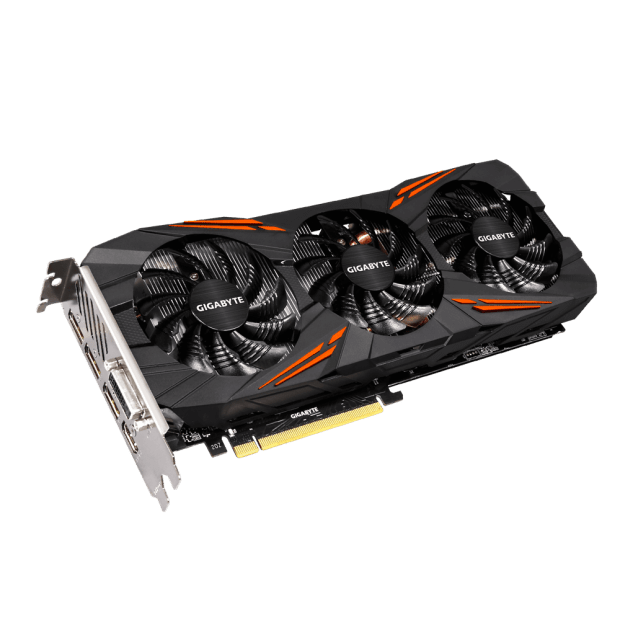
The G1 Gaming GTX 1070 performs very well under stress, and there wasn’t a time when I couldn’t maxx out any game I wanted. Aside from really high-end features (think GTA 5’s Advanced Graphics Options) and poorly-optimized game, there isn’t anything the GTX 1070 can’t handle. With whopping 8GB of VRAM similar to the GTX 1080 makes GTX 1070 future-proof for a long time. The lack of GDDR5X memory type present in the 1080 doesn’t make the GTX 1070 any worse, and realistically, far few games need any more than 4GB of video memory onboard. Some of the results were very impressive, and I found myself enjoying my games much more than in the past. The GTX 1070 is known to handle well under 1440p, although my experience at the moment limits it to 1080p gaming, but aside from 4k the GPU usually has no troubles keeping up 60 fps or above.
Some game tests (1080p 60Hz Monitor used):
- Doom (2016) – All presets Ultra: 130 fps
- Grand Theft Auto 5 – All presets Ultra minus the Advanced Graphics Options: 60 fps
- No Man’s Sky – All presets Ultra: 60 fps
- Ashes of the Singularity – All presets Ultra, DX12: 50-60 fps
- Rise of the Tomb Raider – All presets Ultra, no VXAO, SMAA x4: 60 fps
- The Witcher 3: Wild Hunt – All presets Ultra minus Nvidia Hairworks: 60 fps
As seen above, the Gigabyte G1 Gaming GTX 1070 has absolutely no issues running some of the most demanding games at steady 60 fps, although it’s just the Ashes of the Singularity game that pushes it further. Doom easily hits 130 fps which I was very impressed by, and that factor contributes a lot to the pacing and enjoyment of the game. Very few games are unable to hit the 60 fps mark, and all it takes is usually some simple graphics tweaking to get things back in order. Keep in mind these tests are done on factory clock and memory speeds as I currently see no reason to push it further. The GTX 1070 is already good to last 3-4 years moving forward, and is certified to be VR-Ready by Nvidia. Despite its power capacity, the GTX 1070 is also made to be very efficient and runs quietly all of the time. The only noise I could hear from the computer when playing demanding games was the CPU fan. Additionally, the cooling fans don’t spin at all when working on non-gaming tasks and the graphics card barely gains temperature over that period. This will certainly save you some dollars on the electric bill when you don’t do gaming.
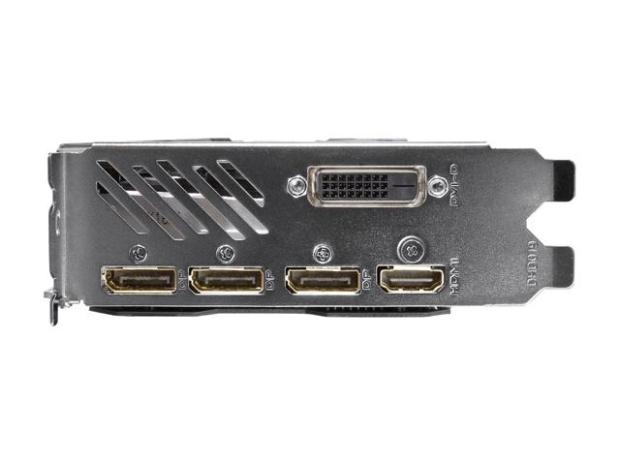
Gigabyte offers many of the same features in its G1 Gaming GTX 1070 that other manufacturers have, and although it won’t stand out as anything particularly innovative, the card is enough to satisfy a wide variety of setups. The card supports a 6+2 power phase design, which is mostly standard in the latest products and serves to provide stability when powered on. The G1 Gaming GTX 1070 needs a full 8-pin power connector to feed it energy, although the standard 1070 known to require less than a 500W power supply to run. Still, it’s always better to be safe and add the extra watts to go with recommended manufacturer specs. On the side to face the rear of the case, Gigabyte’s GTX 1070 features a multitude of port connectors, going as far as being one of the few companies to still offer DVI for video output. The DVI connector really has to be used as the last option as it won’t provide impressive results, and those buying a Pascal card most likely already have a monitor of no more than a few years or are planning to buy one. The traditional HDMI is included along with the 3 DisplayPort inputs, which can be configured to a triple-monitor setup. The G1 Gaming GTX 1070 can simultaneously support up to 4 monitors even, although it won’t deliver best performance at high-res triple monitor settings. As the latest improvement in image technology, DisplayPort 1.4 supports high resolutions up to 5K and forward, while the HDMI 2.0 is configured at 4K 60fps display output, which is very neat. But if the need arises, those 3 DisplayPort inputs are always there. To mention the last feature, Gigabyte includes 16.8M color customizable RBG lighting on the side, although I haven’t found its effects to extend beyond highlighting the Gigabyte logo.
Overall, the G1 Gaming GTX 1070 by Gigabyte is a very impressive card and an excellent offer for budget-oriented gamers. It might not be the least expensive in the Pascal line-up, but delivers the best performance-to-price ratio. Gigabyte maintains its high level of quality with this product, and the GPU is very nicely built. The reinforced bottom provides protection and necessary stability, but the product isn’t heavy enough to break the PCI-e slot. Through extensive gaming sessions and trying out a variety of titles, the GTX 1070 never disappointed. Most modern games run on Ultra presets @60fps, and it’s usually the most advanced graphics technologies that can bring the card down to its knees. Still, the level of detail possible to achieve with this GPU significantly improves the enjoyment of playing a game. To sweeten the deal, Gigabyte offers a multitude of neat features on top of the standard Pascal chip, including faster clock speeds, reinforced build and automated cooling fan control. As one of the best variants of the GTX 1070 available to buy on the market, this Gigabyte G1 Gaming GPU delivers on all expectations and provides a lot of performance along with some neat features. Nvidia GTX 1070 remains one of the best cards available on the market for its price, and Gigabyte just further extends the appeal with its brand-specific features.

Pingback: Most Outrageous Gaming PCs | Challenger's Gaming Domain
Pingback: Best Components to Pick for your New Gaming Build | Challenger's Gaming Domain
Pingback: Just Cause 4 Review – A change in wrong direction | Challenger's Gaming Domain